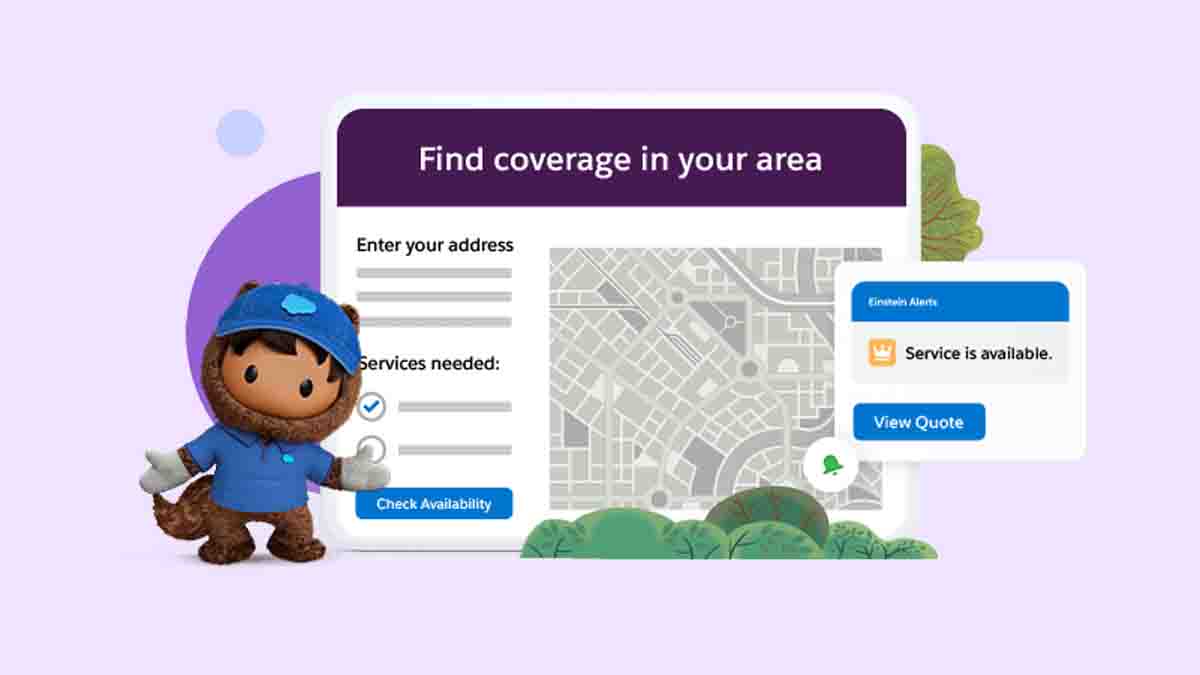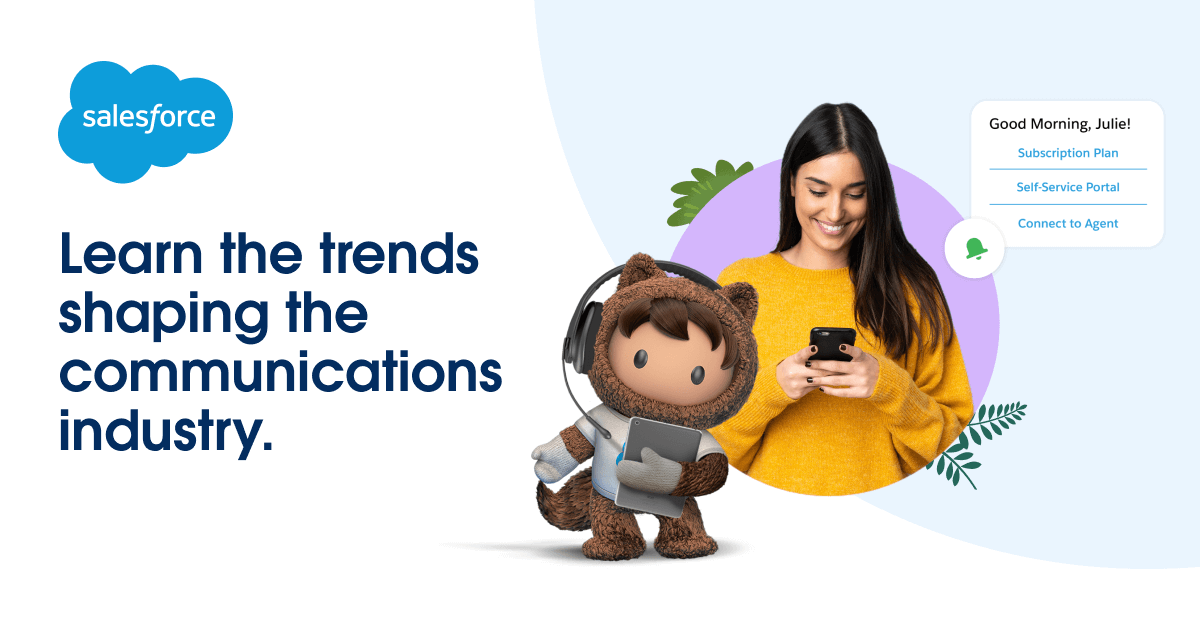How customer service automation drives efficiency and cost savings for communications providers.
Harness AI and automation to free teams from mundane tasks and deliver quality service.
Feb 23, 2023. 6 min read

The technology most communications companies rely on for service is an inefficient mess of systems, whether as a new company or a giant one. Historically, according to Grote, most company resources have gone into building networks, not so much into streamlining all systems across the organisation. This inefficiency is important to address, especially given the huge growth of customer expectations.
For most companies, focusing on building networks left the service side of the business fragmented and disconnected from a 360-degree view of both the customer and the rest of the business. Two things happen as a result: Customers get frustrated when service agents don’t recognise problems in a timely manner or give them the runaround, and, second, service agents’ time is wasted on manual tasks and “swivel chairing.” This leads to higher costs and unhappy customers. It’s also time that could be better optimised on higher-value work.
Attempting to optimise and customise each individual system costs companies money. Picking the best marketing solution, the best sales solution, the best technical solution, and then trying to stitch it all together into a customer service application is expensive and time-consuming. That’s true whether it’s building systems internally or going outside the company.
This is where service automation and AI come in: Together they form a cloud-based solution built on a single platform that lets service teams efficiently scale quality service at a lower cost. It means less time spent on tedious tasks and more time spent on improving customer satisfaction and optimising agents’ productivity.

Three Ways Service Automation Reduces Costs and Keeps Customers Happy.
- Process automation connects all systems of the business so they’re sharing information seamlessly through AI to optimise business processes. The goal is shifting as many interactions as possible to low touch or no touch.

- Service team automation employs artificial intelligence to assist agents with manual, time-consuming tasks to increase productivity and provide the flexibility to focus on personalised customer experience.
- Customer automation involves business processes across all aspects of an organisation, from simple no-touch, self-service actions to high-touch, complex incidents.


AI powers this by building processes on the back end through the Service Cloud platform. It can also be personalised so when customers log in, the company knows who they are, what type of service is needed, and what types of service or product upgrades they should be offered.
The second types of conversations are high touch, such as when a customer is interested in the new iPhone. That’s a personalised conversation you want a service agent to have to optimise value, such as upselling a customer on a better device with more features, data, and storage.
AI is at work even during personal conversations, arming agents with recommended knowledge articles, for example, or next best actions when they’re engaging with a customer live. That automation reduces your average handle time and increases first-call resolution. You’re able to get through more calls and resolve them the first time versus having to revisit an issue because it wasn’t resolved on the first go-around.

Automation is also at play in the field. Say a new customer needs an in-home installation. Automation helps schedule the installation through a self-service portal, which also sends reminders to the customer about the appointment to prevent no-shows.
Once the technician is onsite, the system makes sure the technician has all the customer’s information via a field service mobile app, eliminating time wasted searching for relevant data. Depending on the job, the system also gives the technician a checklist of materials and tools to complete the job on the first trip, preventing costly return visits.

Say a customer is streaming the World Cup and suddenly the internet goes down in a regional outage. The customer’s first reaction usually is to call the provider. That means service agents are being inundated with calls.
Meanwhile, technicians are busy investigating the problem and taking the necessary steps to have it fixed as soon as possible.
Process automation ensures all the different systems, from the service agent to the technician and even engineering teams, are up to speed on the problem. So, when someone calls about an outage, the service agent already knows about the issue and is armed with relevant information to share with the customer.
Better yet, when customers call, they hear an automated recording letting them know that technicians are aware of an issue in their area and when it will be resolved. This can also be accomplished if a customer logs in to the website through, for example, a banner message.
AI can also proactively detect a problem before a technician or customer even knows about it. Take, for example, a scenario where the communications lines to a grocery store are damaged during off hours, knocking out all of its communications systems.
The system can notify incident response or engineering teams after pinging the store’s router and not receiving a response, and dispatch teams to quickly fix the problem. All this could happen before the store owner even knows there’s a problem. The owner would be proactively notified there is an outage, it’s being worked on, and it will be resolved soon.
Slack is the interface that brings together various experts across different departments who would otherwise be working in silos and in different systems together into one centralised location to collaborate and quickly resolve the issue. When an incident is created — say, an internet outage — a Slack swarm can be created with all the relevant information and players, such as engineering, DevOps, service agents, and even marketing.
Service agents can stay informed on the latest developments so they in turn can provide that information to customers. And an archive is created that can be accessed at any time to bring agents or technicians new to the issue up to speed. It helps communications providers bring all the right experts together quickly with the right context.

All of this makes speed and efficiency centerpieces to customer service. The data is a thread that ties it all together.
Data will always reside in different systems, with different sources coming in and out. It’s how the data is integrated and scaled that makes agents more productive and creates the greatest efficiencies and cost savings.
Salesforce customers ran 1.3 trillion automations in March 2022, amounting to $2.19 trillion in customer business value. That’s 1.3 trillion times someone didn’t have to change a status field, field a nonproductive customer service call, or repeat information.
That level of automation is critical in every aspect of business today — and especially in customer service.
More Resources
Do you have questions? We help you on your way.
Ask about our products, prices, implementation or anything else. Our experts are ready for you.
Questions? Call us at (+44) 800 086 8530.












